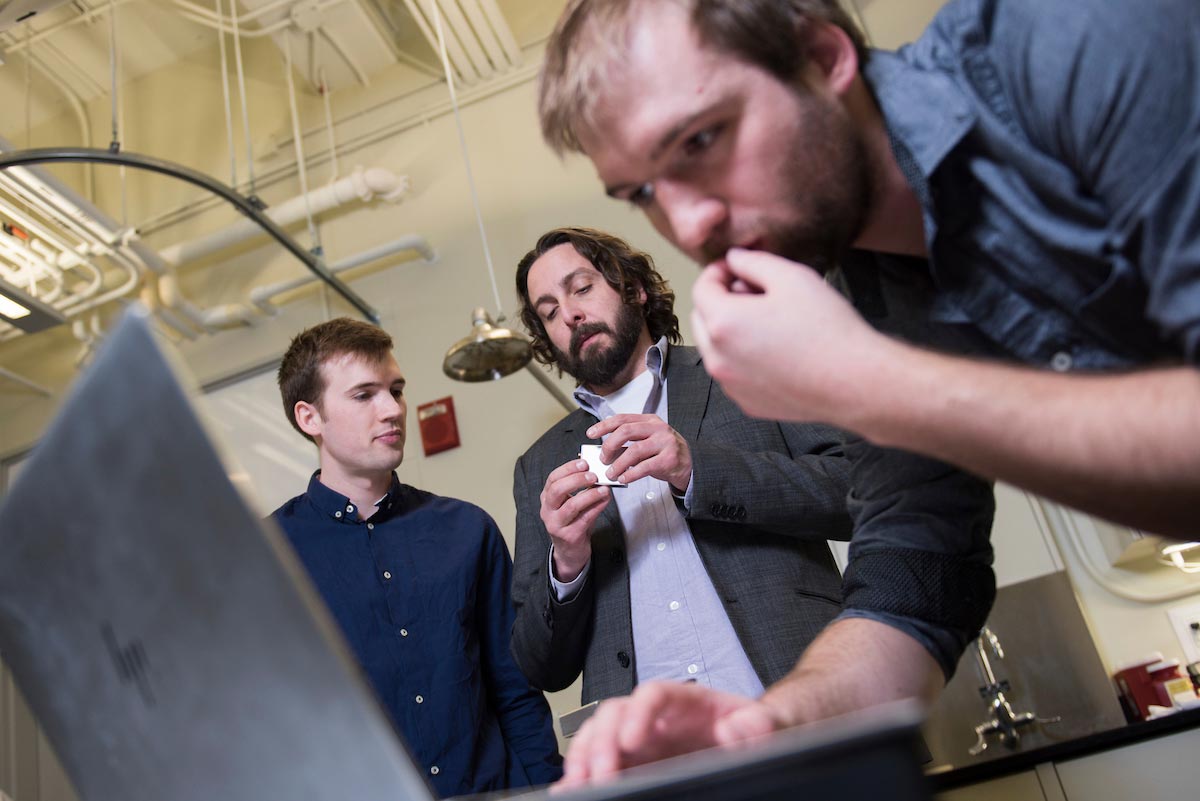
John Davis, Professor in the University of
Alberta Department of Physics, center, with Callum Doolin, PhD student,
and brother Pearse Doolin.
A new graduate program at
the University of Alberta is focused on producing scientists who will
revolutionize the information and communications sector through quantum
technology, both by leading research and development in established
industries and by starting companies of their own.
“Quantum technology is a field on a precipice,” said John P. Davis, University of Alberta physics professor and program lead of QUANTA.
QUANTA--quantum nanotechnology training in Alberta--is supported by
NSERC’s CREATE (collaborative research and training experience) program
and will be hosted by the Universities of Alberta and Calgary.
“In the next five to 10 years, we expect that quantum will
disrupt many existing technologies. It remains to be seen which ‘Quantum
Age’ technologies will dominate, but one thing is certain: society will
need highly trained physicists and engineers capable of leading these
advances, both in academic and industrial settings.”
The motivation behind the new program is to tilt graduate
training on its axis, creating graduates ready for business and
industry, instead of the traditional route of academia.
“We’re trying to fill this gap in graduate training,
because more and more, students are entering the technology industry or
becoming entrepreneurs. We need to train them how to survive and thrive
in that world.”
The new program will foster innovation, management, and
entrepreneurship skills, preparing graduates to found and advance
quantum technology companies, solidifying Canada’s central role in
leading the Quantum Age. With features like professional skills and
business planning development, internships with industry partners, and
micro-grants, or seed money, to support students turning their business
ideas into reality, this is grad school done differently, designed to
develop students for careers in the quantum technology sector.
“We are in coming into the second quantum era. Where we
first had these fundamentals of quantum physics a hundred years ago, we
are now at the point where we understand quantum physics and are
developing quantum technology to take to the marketplace.”
Davis said Canada is well-positioned to be a big industrial
driver of this second coming of quantum, noting the success of
companies such as D-Wave Systems, a maker of quantum computers, and the nanoFAB, based at the University of Alberta, one of the world’s leading nanofabrication facilities.
“Canada is in a really strong place, but we have to
continue to act to sustain and push that position further. We have a
society that is open to new technology, and we have funding agencies who
are interested in pushing forward not just in science but also
technology, innovation, and entrepreneurship. The ingredients are all
there to support a real revolution in quantum technology in Canada.”
Another focus of the program, in addition to developing
industry-ready grads, is diversity. “By encouraging and supporting
diversity in QUANTA students, we’re contributing to diversity in the
quantum industry as a whole,” said Davis. “That means incorporating best
practices in our program to recruit the best and brightest students--of
all backgrounds.”
Quanta involves a collaboration between six principal investigators,
John P. Davis and Lindsay LeBlanc from the U of A’s Department of
Physics, Ray DeCorby from the U of A’s Faculty of Engineering, and Paul
Barclay, Christoph Simon, and Wolfgang Tittel from the University of
Calgary.
The research goals of this collaboration are focused
long-term of the establishment of a coast-to-coast quantum network for
Canadian governments, businesses, academia, the health industry, and
individual citizens. To that end, they received funding earlier this
fall via the Canada Foundation for Innovation to focus on the
development of quantum networks, which allow transmitting quantum
information over thousands of kilometres, enabling secure communication
and unprecedented computational performance.